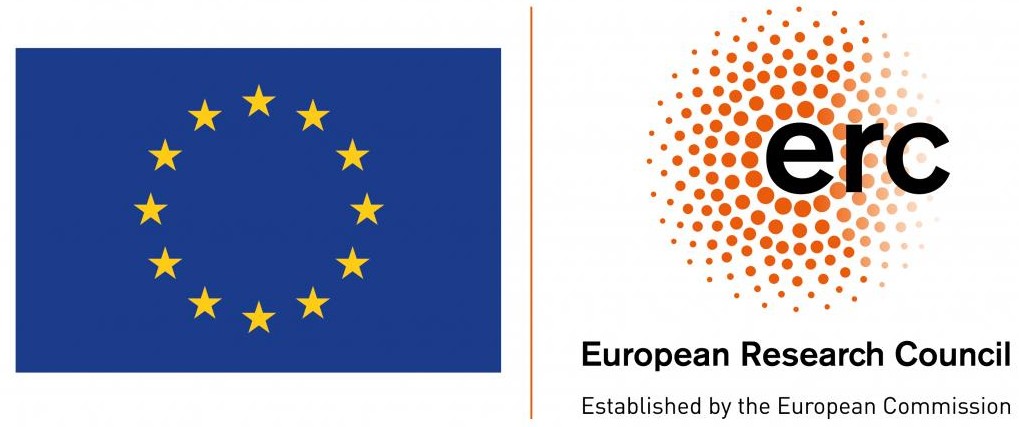Our projects
In the Young Investigator Group “Meteorological Data Science”, we aim at improving our understanding of atmospheric processes and predictability through the deployment of statistical models and machine learning. Our research mostly focuses on weather forecasts provided by numerical weather prediction models and fully AI-based models on the medium-range to sub-seasonal time-scale. The group is to a large extent funded through the ERC Starting Grant “Advancing sub-seasonal predictions at reduced computational effort (ASPIRE) and individual DFG grants. To best possibly combine domain knowledge and data science, we conduct research in collaboration with other institutes facilitated by the KIT Center MathSEE and the KIT Graduate School Computational and Data Science.
ASPIRE
The new frontier for weather prediction is the so-called subseasonal time scale of two weeks to two months ahead. To take preventive measures at an early stage, reliable forecasts on this time scale are becoming increasingly important for multiple socio-economic sectors. Subseasonal predictability can be gained from recurring patterns in the Earth system. The ERC funded project "Advancing subseasonal predictions at reduced computational effort (ASPIRE)" will focus on one of these, namely modes of tropical
convective variability. Long-standing systematic errors due to the parametrization of processes in numerical weather prediction models prevent the predictability of these modes from being exploited. Simply running models at a resolution high enough to resolve tropical convection is not feasible due to high computational costs. Taking advantage of recent developments of AI-based models, ASPIRE will explore new ways to better exploit the intrinsic predictability of tropical convective modes without exhausting the currently available computing resources.
First, ASPIRE will identify the source regions and pathways of tropical forecast errors that prevent the intrinsic predictability from being exploited using subseasonal ensemble hindcasts. Second, ASPIRE will quantify the added value of locally confined kilometer-scale resolution in the source regions identified before, and generate probabilistic predictions from deterministic forecasts through ML-based post-processing. Third, ASPIRE will fine-tune ML models with a particular focus on tropical convection convection in the tropics at substantially reduced costs. Contact: Julian Quinting/Siyu Li.

NAWDIC
The North Atlantic Waveguide, Dry Intrusion, and Downstream Impact Campaign (NAWDIC) is an international field campaign that aims to deepen our understanding of mid-latitude cyclone dynamics in the North Atlantic region. The campaign focuses on synoptic- to micro-scale dynamical and physical processes that cause high-impact weather phenomena like severe wind gusts, heavy precipitation, and cold air outbreaks. During the six-week core observation period of NAWDIC in January and February 2026, various airborne in situ and remote sensing measurements systems as well as dense ground-based observations will provide detailed insights into the mesoscale tropopause structure, dry intrusion air streams, and dynamics near the surface cold front of winter-time cyclones. As a key component of the field campaign, the high-altitude and long-range research aircraft HALO of the German Aerospace Center (DLR) will be based in Shannon (Ireland) and allow to carry out measurements in remote areas up to heights of the upper troposphere and lower stratosphere. Furthermore, the mobile measurement facility KITcube will be set up at the French Atlantic coast to continuously monitor meteorological variables in the marine and continental planetary boundary layer. The project is led by scientists from IMKTRO at KIT and involves partner institutions from Germany, France, United Kingdom, Israel, Norway, Italy, Switzerland, United States, and Canada that will participate with further measurement platforms and research activities. NAWDIC is officially endorsed by the World Weather Research Programme (WWRP) of the World Meteorological Organization (WMO). Contact: Bastian Kirsch/Julian Quinting
Probabilistic weather regime prediction
Weather regimes describe continent-size, quasi-stationary, persistent large-scale atmospheric flow patterns. State-of-the-art numerical weather prediction models are able to predict weather regimes with a lead time of up to two weeks. The MathSEE-funded project "Probabilistic weather regime prediction: combining physical models and generative machine learning" aims to improve sub-seasonal weather regime forecasts using statistical post-processing techniques. These post-processing techniques have successfully been applied to a wide range of target weather variables but not yet to probabilistic weather regime predictions. To maintain a multivariate probabilistic forecast, we follow a two-step strategy rooted in Sklar’s theorem from multivariate statistics. First, we treat the univariate marginal distributions of weather regimes independent of each other by applying ensemble model output statistics (EMOS) independently on each weather regime. In the second step, we restore the dependence structure of the weather regimes from the numerical weather prediction (NWP) models by applying ensemble copula coupling (ECC). Through these post-processing steps, the univariate forecast skill horizon is improving on average by 1 day.
To further advance the skill of the weather regime forecasts and identifying windows of forecast opportunity (periods in which forecasts are skilful for more lead times than usual), we plan to employ neural networks which post-process the weather regime forecasts not only by statistical means but involving slowly varying components of the climate system. This project is conducted together with Sebastian Lerch at the Institute of Statistics at KIT. Contact: Fabian Mockert/Julian Quinting
